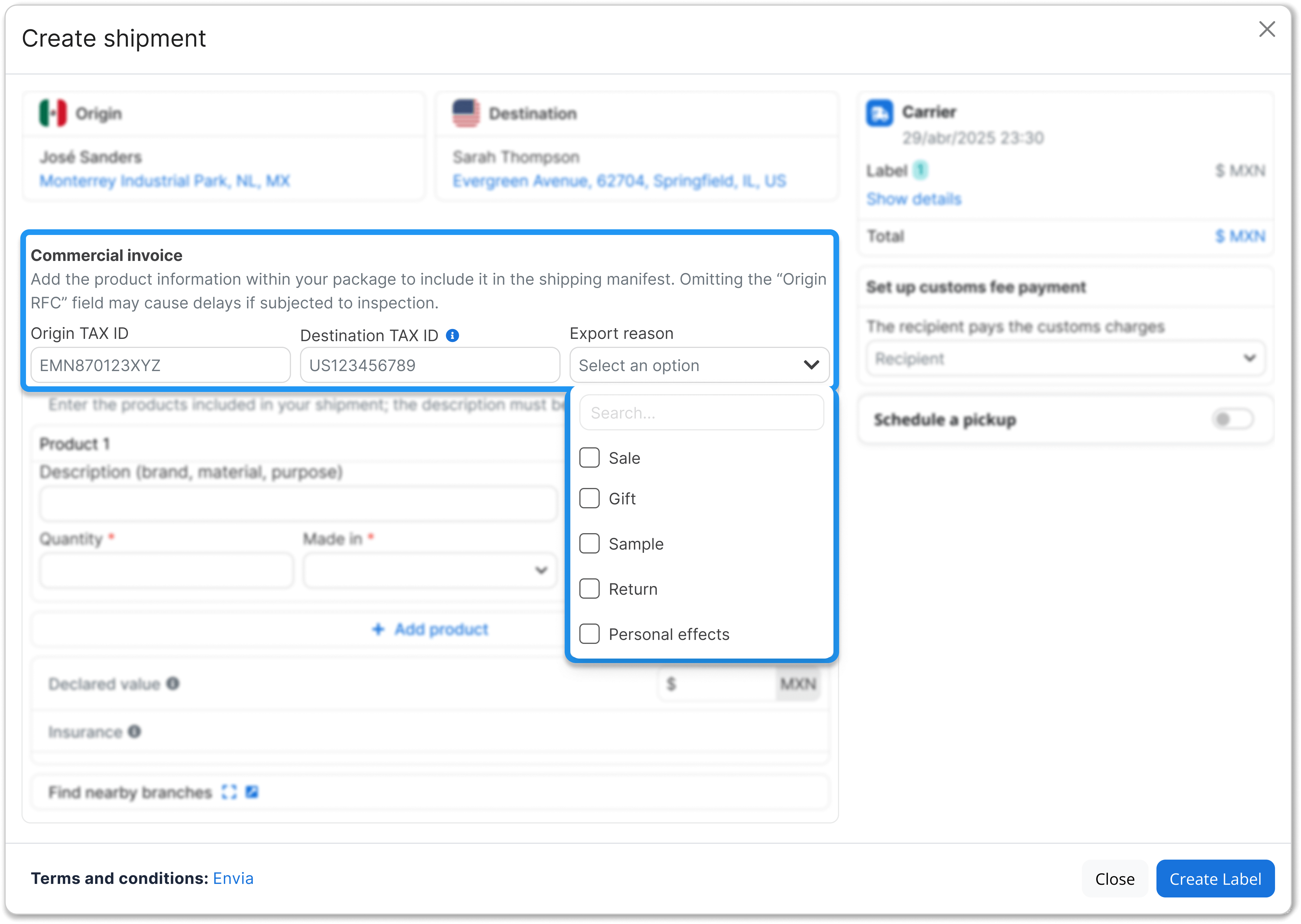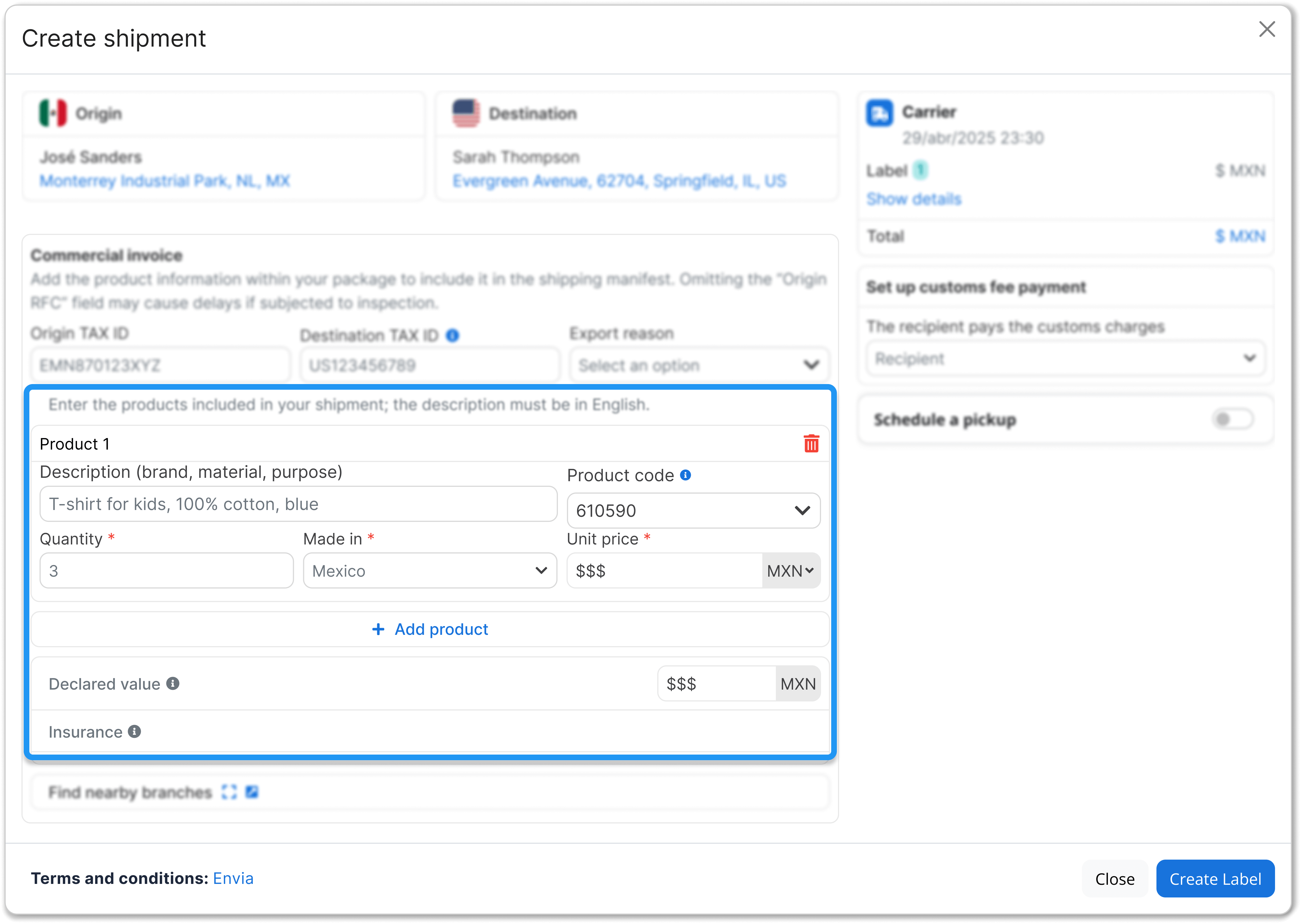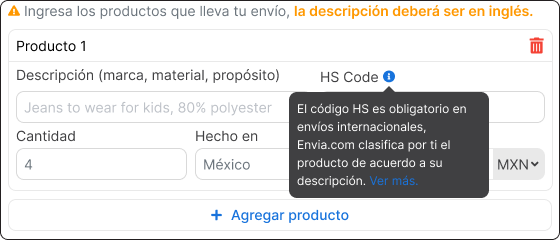Create shipment / International shipments
Product declaration
When you ship internationally, customs needs to know exactly what is in your package. This information determines taxes, duties and whether the product can enter the destination country.
📦 Correctly completing the product declaration helps to avoid delays, additional costs or withholding at customs.
Choose the export reason
When declaring your product, select the reason for which you are sending the package:
- For sale
- Gift
- Sample
- Return
ℹ️ Export ratio: It must match the actual contents; if it does not, customs may hold your package.

Complete all product fields
Enter the information required by customs:
| Field | What should you write? |
|---|---|
| Detailed description in English | What the product is, what it is made of and what it is used for. Example: “Cotton t-shirt for casual use”. |
| HS Code (Harmonized System) | Mandatory international classification to identify products and apply tariffs. Envia.com suggests it automatically according to your description. You can review it and edit if necessary. |
| Number of units | Number of equal products included in the package. |
| Country of manufacture | Country where it was manufactured, not where it was shipped from. |
| Unit price | Individual cost of each product. |
| Declared value | Actual commercial value of the content (what the buyer paid). |

HS Code and why it is mandatory
Harmonized System nomenclature (HS code) allows you to precisely identify the product and determine which tariffs and requirements apply. It is a logical structure for classifying goods that is used uniformly by customs authorities around the world.

ℹ️ Envia.com analyzes the english description you enter and you automatically suggests a HS code compatible.
Important Notes
- The declared value must be real and consistent in all documents (waybill, commercial invoice and receipts). If it does not match, customs may hold the package or apply additional charges.
- Use clear and specific descriptionsavoid generic terms such as "accessory" or "gift".
- If your product is a kit or set (example: "Gift set with T-shirt and cap"), describe each component; customs classifies materials separately.
- Always check the suggested HS Code. If the system shows low confidence, confirm or adjust the code.
Did you find this resource useful?